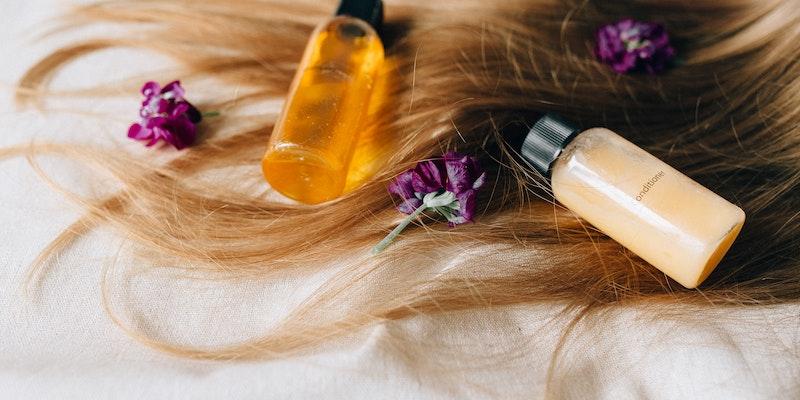Do You have Gray Hair? Find Out Why
Oct 29, 2023 By Madison Evans
Each head hair has two fundamental parts:
- The hair shaft shows the hair color. It emerges from the scalp and faces the world. Shaft color and texture vary per individual.
- The hair root is underneath the scalp. It's anchored in the hair follicle, keeping the hair in place. Hair growth and stability depend on the root.
Hair follicles surround each hair strand's source. These follicles contain pigment cells that create melanin, which gives hair its brown, blonde, black, or red color. Hair follicle pigment cells decline with aging. As hair develops, reduced pigment cells produce less melanin, so hair turns gray.
Gray hair is hereditary and can emerge at any age. There can be many reasons for transitioning to gray hair.
Causes of Gray Hair
Gray hair is normal with aging for most people. However, premature hair graying may indicate a health risk. Premature graying has been connected to several health issues, illustrating the complex interaction between hair and health. A thorough look at early graying diseases:
Vitamin B12 Deficit
Nerve function, DNA, and red blood cell formation require vitamin B12. B12 deficiency can damage hair follicles, transitioning to gray hair. Maintaining hair color and health requires B12 consumption from food or supplements.
Neurofibromatosis
Neurofibromatosis, often known as Von Recklinghausen's disease, is a genetic illness that generates nerve tumors and affects bone and skin development. Genetics may cause premature graying in particular people with this illness.
Tuberous Sclerosis
Tuberous sclerosis, a rare genetic disorder, causes benign brain, heart, kidneys, eyes, lungs, and skin tumors. Tuberous sclerosis may cause premature graying due to a complicated genetic interaction.
Thyroid Disease
Thyroid problems, whether hyper or hypo, can alter hormone balance. Hormonal imbalances may influence melanin synthesis, causing premature hair graying.
Vitiligo
Vitiligo occurs when the immune system mistakenly assaults melanocytes, which produce skin and hair pigment. Damage to melanocytes at hair follicle bases can cause the transitioning to gray hair.
Alopecia Areata
The immune system erroneously attacking hair follicles in alopecia areata can cause graying of your hair. This disorder may cause abrupt hair graying, highlighting gray or white strands.
Understanding how these health issues may cause premature graying is crucial for preventative health management. If you observe premature graying and have health concerns, see a doctor.
Ethnicity and Genetics
Race and ethnicity also affect premature graying. The 2013 study showed racial and ethnic differences in why does hair turn gray. Graying can start around 20 for whites. This process begins at 25 years old in Asians and 30 years old in African Americans. These variants show how genetic variety affects premature graying.
Oxidative Stress
In premature graying, oxidative stress may contribute to the graying process, which is primarily hereditary. Oxidative stress is caused by free radical-antioxidant imbalance. Chemicals called free radicals damage cells and age and sicken them.
Gray Hair In Mice
Recent research suggests why does hair turn gray. Stress may cause mouse hair graying. This may seem odd, but these findings raise issues about whether stress affects human hair color. The severity and frequency of such consequences in persons are unknown. Stress and gray hair in mice show the intricate relationship between emotions and physical changes. Stress may affect fur or hair color, among other physiological processes.
Accepting aging requires understanding the natural graying process. Stress may not directly affect hair color, but its impacts on the hair development cycle may cause gray hair.
Gray Hair Management Solutions

Hair Toners
Hair toners are popular for gray hair. They apply hair pigments to boost color and neutralize undesirable tones. Gray hair might have yellow or brassy tones, but hair toners help balance out the hue. Different hues fit different hair types and preferences. Depending on the intended result, toners can change hair color subtly or dramatically.
Purple Shampoos/Conditioners
Purple shampoos and conditioners target gray or lightened hair. These products counteract gray hair's yellow tones with purple pigments. Use purple shampoo and conditioner often to keep your gray hair looking fresh. The purple pigments in the cosmetics neutralize yellow, making hair brighter and more relaxed.
Color-Enhancing Shampoos & Conditioners
Color-enhancing shampoos and conditioners retain gray hair color. They can enhance gray hair's silver tones or add color to reach the desired tint. These products deposit a mild color deposit to brighten and gloss gray hair.
Hair Serums and Oils
Serums and oils are great for gray hair, especially dryness and frizz. They moisturize and protect hair, making it softer and shinier. Some hair serums are designed to enhance gray hair's inherent attractiveness.
Professional Color Treatments
Gray hair color treatments from a trained hairdresser can be helpful. They might recommend glosses, highlights, or lowlights to brighten gray hair and make it seem younger.
Baking Soda and Vinegar for Gray Hair
Many people worry about gray hair, which indicates aging and a loss of youth. Baking soda and vinegar may help gray hair. It's essential to understand the consequences and investigate other hair-healthy options.
Baking soda is used in baking, cleaning, and personal care. Many home and cosmetic products contain it because its alkaline qualities facilitate chemical reactions. Baking soda for gray hair has the following potential benefits.
- Baking soda balances gray hair's pH to neutralize brassy or yellow tones, restoring an even hue.
- Non-Chemical Hair Lightening: It adds brightness and health to gray hair without chemicals.
- Baking soda removes product buildup, making hair softer and more textured.
Baking soda for gray hair has advantages, but there are necessary precautions:
- Baking soda may strip hair of natural oils, causing dryness, especially in gray hair that struggles to retain moisture.
- Use baking soda sparingly and follow up with conditioning to reduce damage.
Understanding your hair's demands and trying several solutions can help you find the best gray hair treatment for healthy, bright, and well-managed hair.
Conclusion
Understanding why does hair turn gray helps us accept aging's beauty. Gray hair results from hair follicle pigment cells producing less melanin with aging. Gray hair is hereditary, but stress can trigger it early. Gray hair treatments must be tried. Natural solutions like baking soda and vinegar can balance pH and remove buildup, enhancing gray hue. Use sparingly and condition to reduce transitioning to gray hair damage. Managing gray hair and keeping it healthy and bright requires understanding its needs and trying numerous solutions.









